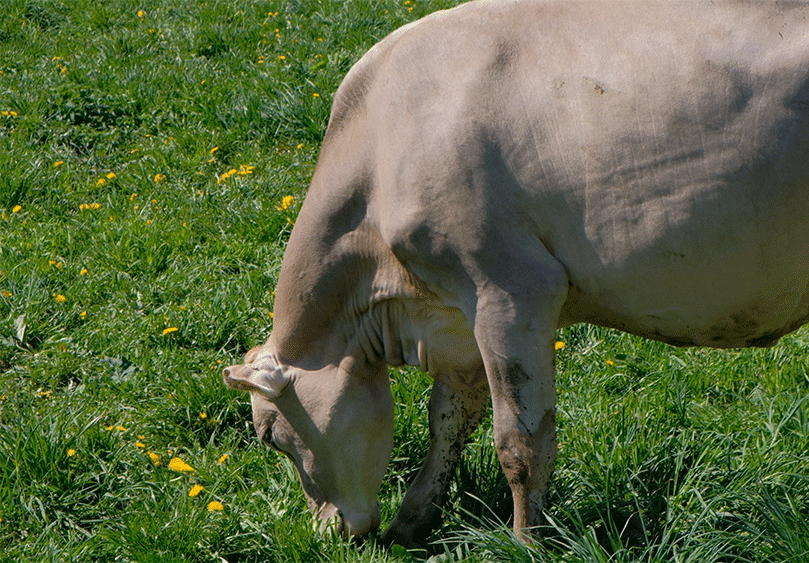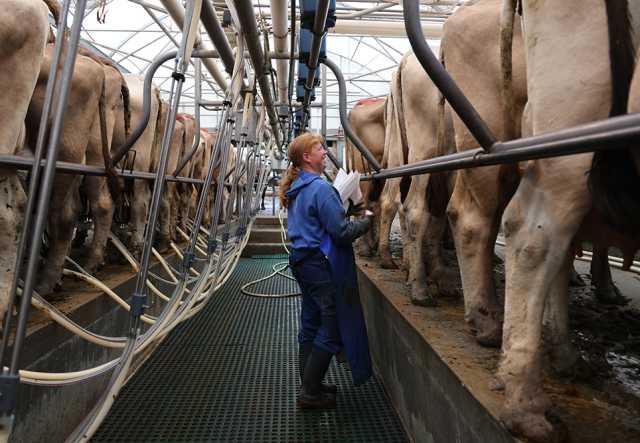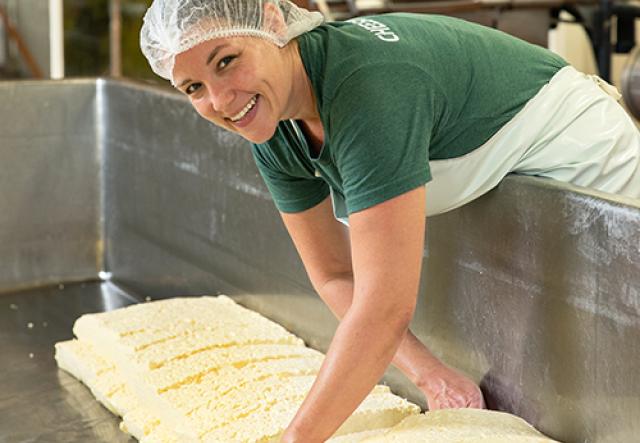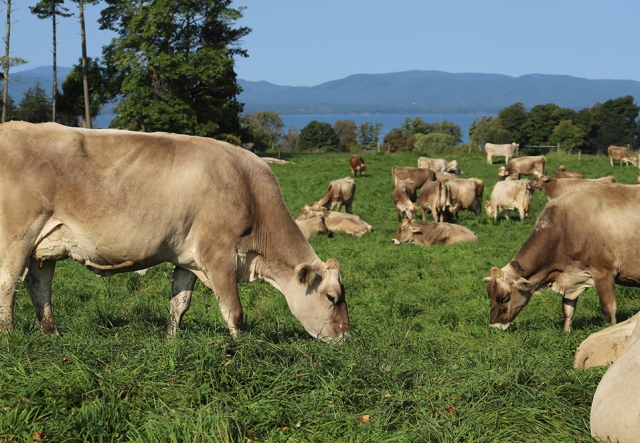It is incumbent on us Humans that we least interfere with Mother Nature's ways. The story of Shelburne Farms Cheddar is told through the Cows as they graze the farm's rich and natural landscape. Their gift to us is their Milk which reflects the congruencies (and reciprocity) of the soil, air, grasses, plants, fellow critters, and weather taken all together. These environmental variables, created and overseen by Nature, meet in remarkable universal harmony. To disturb any one of them offsets the whole. From the Milk to the Cheese to our pure enjoyment this story reminds me of how all foods should be gotten and appreciated. It is incumbent on Science not get ahead of Nature otherwise we lose its essence in all things that compose the enjoyment of Life. I hope that as we recognize the potency of Technology on the planet, and us, that Science strengthens its bonds of friendship to Nature just as the exemplar shown by Shelburne Farms.
Thank you for the delicious Cheese. Thank you for taking care of the Planet and loving Nature.
Sincerely,
JPM.
All forms of Life, from the microscopic to the gargantuan, have a place reserved for them on the planet
This blog has been updated since its original publication.
Watch the "Sun to Cheese" journey at Shelburne Farms" in under 3 minutes.
A cow’s diet will affect her milk, which in turn affects the cheese made from that milk. This is especially true with our raw milk cheddar.
So when our cows transition each spring from their indoor winter diet of hay and baleage to a summer outdoor diet of pasture grasses, we have to adjust our cheese making accordingly.
To make a consistent, wonderfully-flavored cheddar each day, we aim for a series of measurable targets for moisture, salt, and pH in each batch. These targets help us control how the cheese ages over time. The closer we hit the targets, the longer we can age our cheese to yield the flavor profile expected and desired for that age. (We also consider milk quality, and other milk components, too.)

Here are a couple examples: If the moisture level is too high in the initial make, the cheese will be less stable over time, so we may not age that cheddar as long. If the salt level is too low, the cheese won’t develop enough flavor over time, so again, we might not age that cheddar as long. We taste each batch over the aging process periodically to track its flavor progression.
As the cows switch to a summer pasture diet out in the fields, we primarily adjust the moisture target. Rich new pastures have a lot of digestible protein, which shows up in the milk as casein (milk’s main protein). Casein reduces the amount of available moisture in the cheese as it ages, so we increase our moisture target slightly right now to ensure the cheese will retain the right amount of moisture as it ages. In the fall, we’ll dial that target back again.

Targets aside, summer cheese is different from winter cheese. Because of beta-carotene in fresh grass, the cheese tends to be more yellow-y. And grassy flavors show up. “Our summer cheddar is a vibrant and tangy cheese," says head cheesemaker Perry Willett. “It truly embodies the ‘flavors of the pasture’ and is a great representation of our farm’s commitment to sustainability!”
A word on a wet spring
The stage of lactation is also a variable we consider throughout cheesemaking. Most of our cows are bred to calve yearly in March or April, and there tends to be higher fat and protein.
Then there’s the Brown Swiss milk itself. Derick Webb may not have envisioned this when he introduced the breed to Shelburne Farms in the early 1950s, but he selected a cow whose milk is almost perfect for making cheddar. It has a terrific balance of protein to fat.
Of course, all of our aged cheddars are great. A batch of cheese that might not yield the flavors we expect in a two- or three-year cheddar, will still make a perfectly delicious one-year. And there’s nothing inherently better about a one-year versus a three-year cheddar. It’s all in what you like!
All of these variables—some static, some seasonally shifting—make cheesemaking as much an art as a science. And collectively, they help keep us a little more closely connected to—and appreciative of—the land this food comes from.
Learn more on a daily tour...
You may also like
Comments
Please explain the source of your rennet and hygiene acquiring such.
Karen, Check our our blog about rennet, here: https://shelburnefarms.org/blog/demystifying-rennet-a-key-ingredient-in…
I enjoyed reading this paper.



